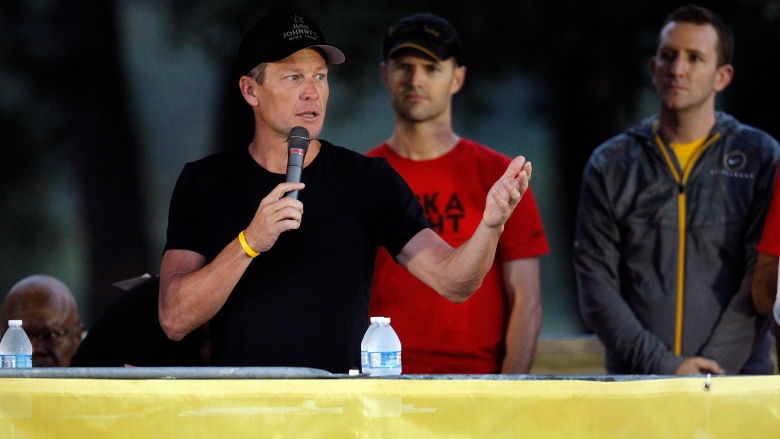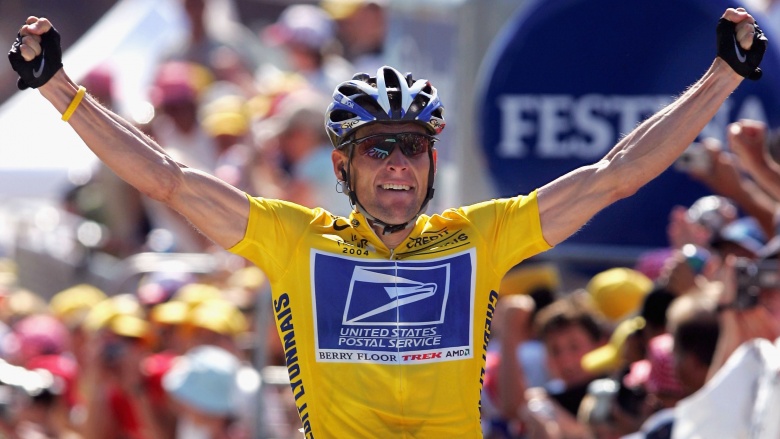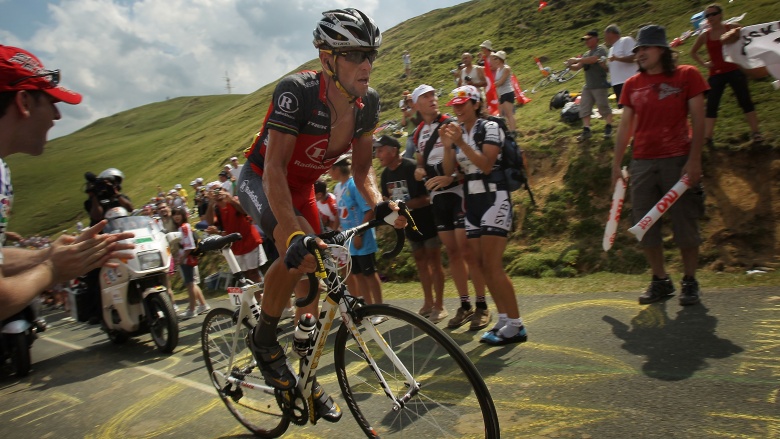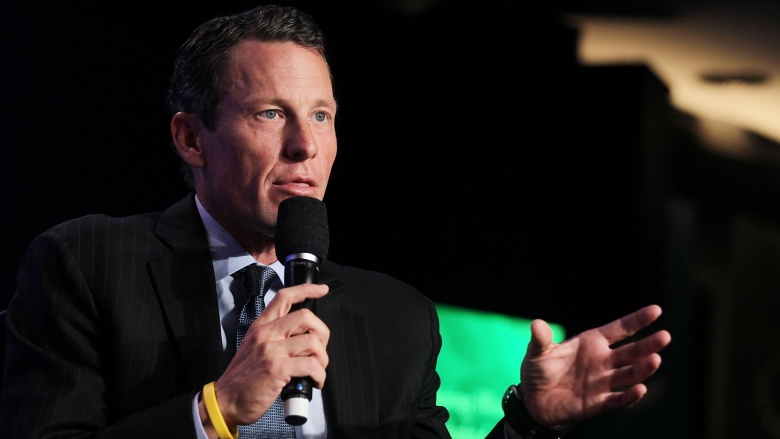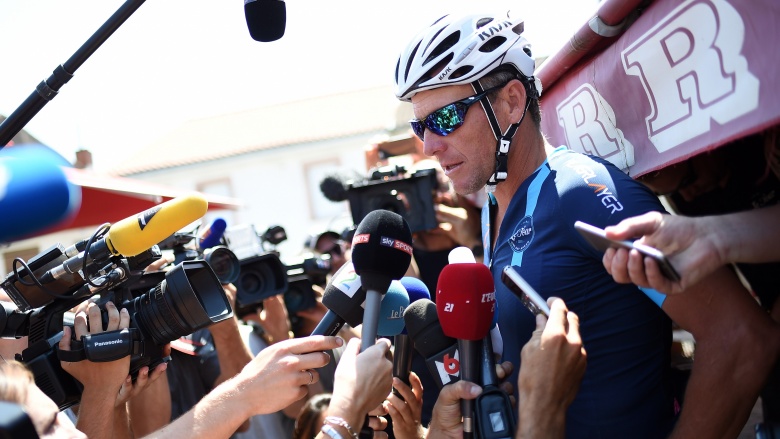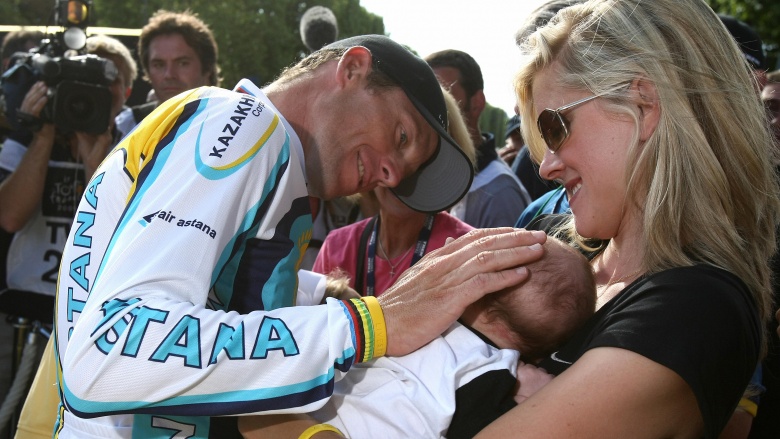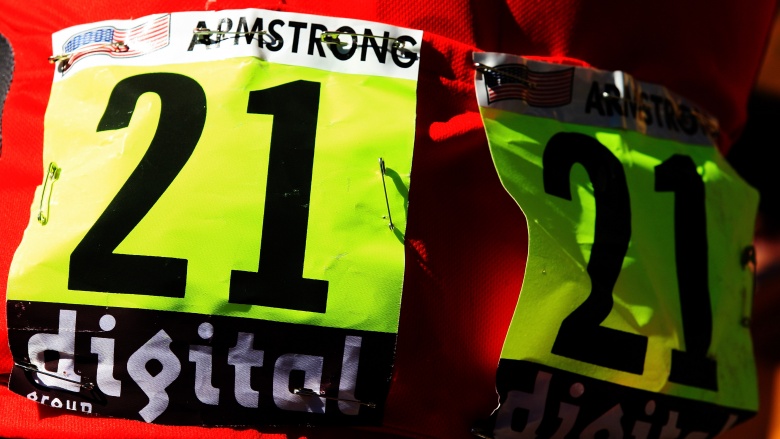The Real Reasons We Don't Hear From Lance Armstrong Anymore
It wasn't that long ago that Lance Armstrong was the poster child for what every American could aspire to being. Not only were his wins legendary, but his triumph over cancer, and his continued campaign to raise awareness of it, was the stuff that anyone could idolize. He was the perfect athlete, and a role model that countless kids could look up to. The bigger they are, though, the harder they fall. His doping scandal rocked the sporting world, and today, we don't hear from the cycling legend all too much. Here's why:
Pulling out of public appearances
It seems like the cycling legend has all but completely dropped out of the public eye since the accusations around him resulted in a lifetime ban from sports competitions, and there's a good reason. Even years after the accusations and scandal first started, Armstrong's lawyers are still keeping a close watch on him and his words.
Armstrong was slated to be a guest at the One Zero conference in Dublin on October 21, 2016, and pulled out about 24 hours before he was scheduled to be front-and-center in a Q&A panel. According to Armstrong, he'd been advised by his lawyers that there might be some legal issues and problems that came from his appearance, and that he needed to withdraw from the panel that organizers say was put together in order to shed light on the problem of doping in sports. While organizers said that he wasn't the first (or the last) to be involved in such a scandal, they had also hoped that he would bring a new point of view to the table.
Armstrong's lawyers have a right to be concerned. Years after the start of the accusations, he's still in the middle of a civil lawsuit brought on behalf of the US Postal Service, who spent millions of dollars sponsoring him and his team before the accusations took center stage. Speaking of ...
The US Postal Service civil suit
In 2010, the USPS handed over a little over $30 million to sponsor Armstrong's cycling team, and is now suing for $100 million in damages. That's a lot of interest.
Armstrong appeared on the "Joe Rogan Experience" radio show, and talked a bit about the case. (Whether or not that was a good idea, that's another story, and Armstrong admitted that his lawyers might think that saying anything at all was a bad idea.) According to him, settling the case out of court was not an option, and what it boiled down to was a matter of risk and damage. When the Postal Service sponsored the team, they knew there was a chance that, say, they wouldn't win. The sponsorship itself was a gamble, and since they likely couldn't prove that they had been damaged by the charges against him, he said they had no case.
In other words, Lance Armstrong was trying to convince us that the damage taken by sponsoring an athlete who lost a race was the exact same thing as damage caused by sponsoring an athlete who blatantly cheated at almost every possible turn.
The case was filed under the False Claims Act, which said that not only did they incur damages, but that Armstrong concealed facts from them, in an effort to keep the money coming in. Some of that money, the lawsuit stipulates, would go right to Floyd Landis to cover his reward for blowing the whole case open in 2010. This is one more in a long string of lawsuits, and Armstrong says that he couldn't afford to settle even if he wanted to.
Things started going his way in March of 2016, when a federal judge ruled that part of the lawsuit was to be thrown out of court, and Armstrong was not responsible for repaying the lump sum he received as the original sponsorship payment. That's good for him, because it sounds like it's mostly gone.
The SCA Promotions trial
Since the accusations, Armstrong has been front and center in a number of court cases, including one that culminated in September of 2015, when he settled a case with SCA Promotions. Armstrong and his camp were doing pretty good at keeping that information, including the final settlement, out of the court of public opinion, but he was originally being sued for $10 million. That amount was supposed to cover bonuses that he was awarded for his wins at the Tour de France, given after the wins and before the allegations of doping.
According to Cycling News, the out-of-court settlement agreement included a stipulation that the settlement not be discussed, or the amount released to the public, which only strengthens the legal gag that Armstrong is wearing these days. The settlement came, by the way, after an appeal of the SCA initially winning the case, thanks to a majority that wrote, "perjury must never be profitable." Turns out, on second thought, it apparently is.
Criticizing the USADA
It's no wonder that Armstrong's lawyers want to keep him quiet: he's kind of a legal meathead. When he does speak to the press, it's debatable just how much good his words do for his case and for his image, although it's easy to understand why he's so angry.
In March of 2016, Armstrong spoke to a class at the University of Colorado and condemned the US Anti-Doping Agency. He was angry, not because he was caught, but because he insisted that he had trained ridiculously hard for his wins, in addition to doping with the illegal substances. When one student asked if he would have been able to win without the doping, he replied that he wouldn't have had a chance, because everyone was doing it at the time.
He claimed that to win, any athlete would have to have the basic building blocks in place, and that the doping just gave that extra edge to push someone to the top. It was all done in the face of the USADA, which he also called one of the most ineffective organizations he'd ever dealt with. He likened not doping to showing up to a knife fight where everyone else brought guns, but not all the students seemed swayed by his arguments. One student even asked him, "[...] how are you able to come into this room and still keep your head up and talk to us?" The answer's simple: he might have needed drugs to win, but apparently, unending chutzpah comes 100% natural.
The controversy around his Tour de France charity ride
It's the question that seems to be wearing away at Armstrong, and perhaps drives his lack of publicity as much as any legality does. In July of 2015, Armstrong headed back to the Tour de France one more time. While he wasn't riding as a competitor this time, he was participating in an event that, in any other circumstance, would be unconditionally honorable. He was riding for an event called One Day Ahead, which is a fundraiser for leukemia. Armstrong is, of course, himself a cancer survivor, and at perhaps any other time, his participation in a fundraising event like that one would have been welcomed. But it wasn't long before it became very, very clear that his presence was anything but welcome.
The uproar was immediate, coming not only from the media but from other cyclists, who accused Armstrong of using the event to get some positive attention for himself. Teams participating in the Tour de France (which was scheduled for after the charity ride), accused him of being, once again, nothing more than a self-centered doper who saw nothing wrong with stealing the spotlight away from honest athletes and their achievements.
On the morning of the charity ride, Armstrong remarked on how far he still had to go to be forgiven in any way, shape or form by the media, other cyclists, and the public, though the outrage over his appearance at the Tour de France made it clear that he was going about earning said forgiveness in the completely wrong way.
Trying to keep out of the news
Armstrong also seems to be making a definite effort to keep his name out of the headlines, just one more reason why we aren't hearing from him as much any more. In fact, his efforts to keep out of the papers are pretty extreme — in at least one case, his long-time girlfriend even tried to take the fall for him in a traffic accident.
In December 2015, Armstrong's SUV collided with two cars that were parked along the streets of Aspen, Colorado. Originally, Armstrong's girlfriend, Anna Hansen, left her contact information with the homeowners, claiming that she had been the one driving the car. She was originally charged with not reporting an accident and exceeding the speed limits of what was considered safe, but police investigators had more questions. They tracked the accident back to where the pair had been seen last before the collision, and the valet at the St. Regis Aspen Resort said that it was Armstrong who had gotten into the driver's seat, not Hansen.
The police interviewed Hansen again, and it took a few more rounds of questioning before she admitted that they had jointly decided she would take the blame for the accident, in order to keep his name out of the papers. In October 2016, Armstrong finally pleaded guilty to reckless driving. While pretending it wasn't him doesn't seem like the best idea ever, it does seem to show that his family is making an extremely conscious effort to keep even the smallest of scandals out of the public eye.
His lifetime ban, and his (failed) attempts to have it lifted
Armstrong's lifetime ban was announced on August 24, 2012, and was retroactively applied to every competition he had participated in since August 1, 1998 (so technically, nobody won the races he won). The ban was put in place after Armstrong failed to provide evidence of his innocence, and forfeited on contesting the ruling. As a result, Armstrong is forever ineligible to compete or place in any competitive event, which puts him out of the running for not only cycling races, but anything else, too.
Old habits die hard, however, and Armstrong has been competing in other, non-professional events. These endeavors are small enough to keep him out of the limelight and the news, while still being big enough to provide the fix for a competition junkie. In addition to various marathons, he's also been participating in trail runs and Ironman competitions, where he's still been setting records and stirring up controversy on a small scale.
What remains to be seen is just how long Armstrong stays off the radar of mainstream sports. Three years after he was banned, it was reported that he was in talks to try to reduce his sentence, and be allowed to re-enter the professional sporting world. That was in March of 2015, and he had reportedly offered to not only confess, but hand over all the dirty laundry he knew about what was going on in the seedy underbelly of the doping world. That would be in exchange for a reinstatement but, as of November of the same year, he admitted that it was looking unlikely that the deal would fly.
At the time, Armstrong likened his reputation to Harry Potter's Voldemort, a character that people would rather pretend didn't exist, in the hopes that he would simply go away. In the face of that, it's a little easier to understand both why he has disappeared, and why the world of professional sports has turned its back on him, seemingly forever.

